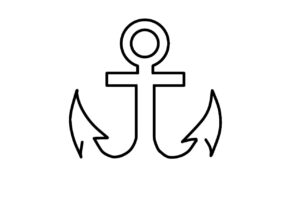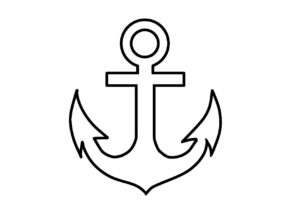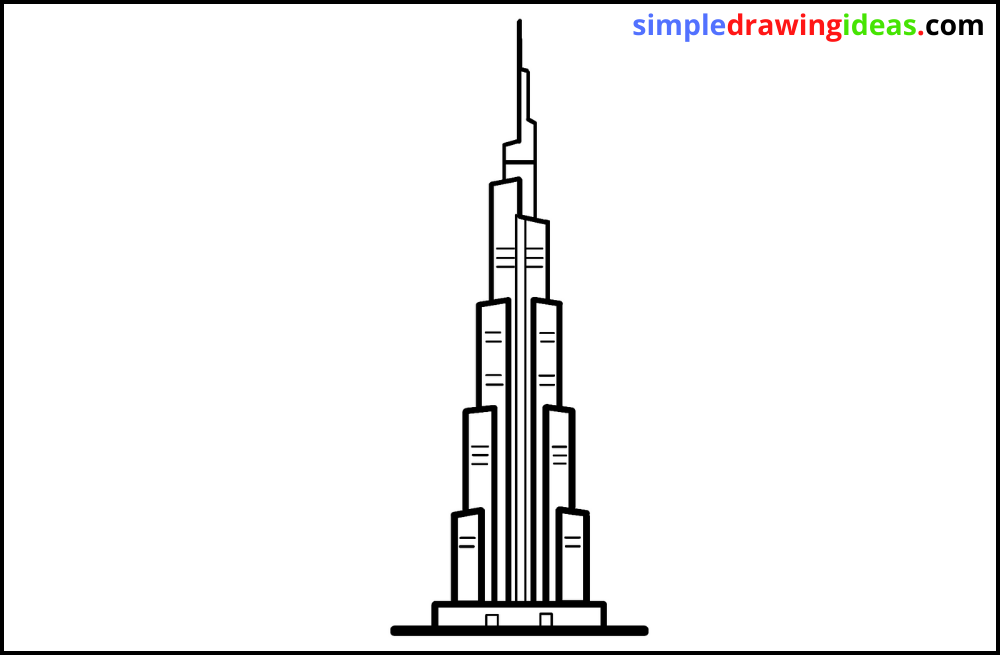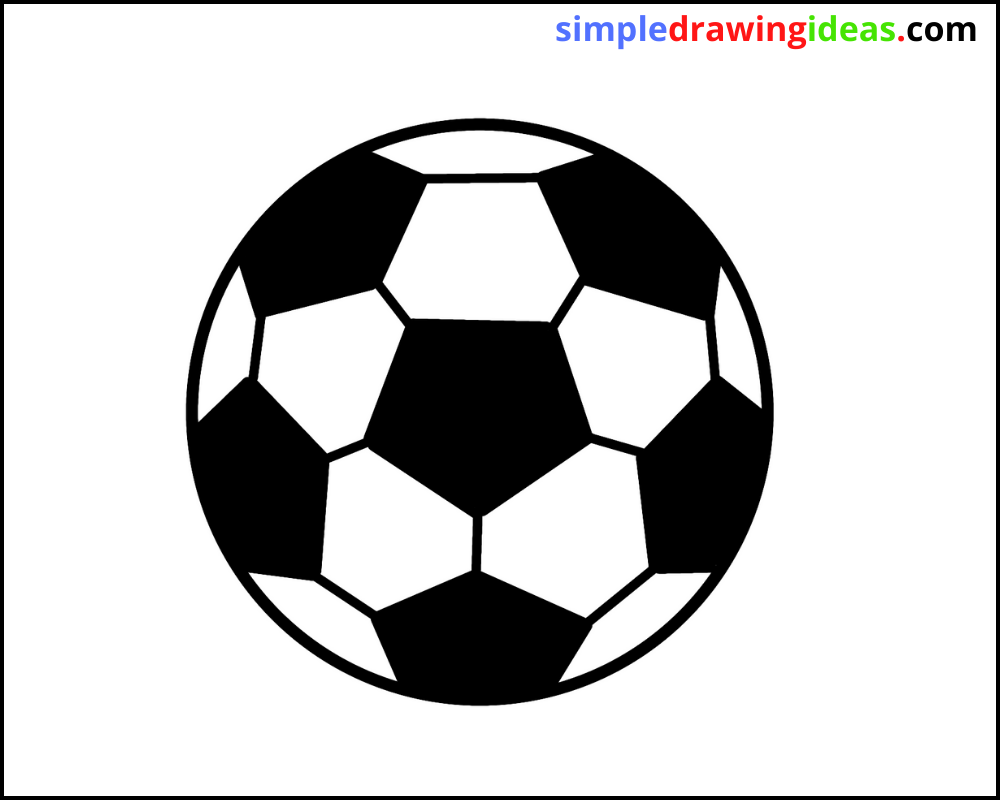How to draw an anchor step by step
in this article how to draw an anchor step by step . There are useful video tutorials and step-by-step instructions included.
While anchors are simple to draw, they can be challenging to render accurately.
Many techniques can be used to draw anchors. The most typical technique is to just draw the body of the anchor and then add the rope, but there are other variations that can be used. Start with a quick sketch before drawing the anchor. After finishing, fill in each line while keeping track of the lines’ orientation.
The instruction you need to begin drawing is in this tutorial. Simple and easy are the steps. You’ll get a flawless drawing if you just follow along.
Materials
- Pencil
- Paper
- Eraser
- Coloring supplies
Time needed: 20 minutes.
- Step 1

trace the anchor ring.
At the top of the anchor, draw two circles of varying sizes.

- Step 2
Integrate the anchor stock.
Draw two horizontal lines that are parallel to begin drawing this detail.

- Step 3
Include the anchor’s lower crown.
Draw the curved line that runs along the base of the anchor. It appears to have a middle point.
Draw the anchor’s flukes.
On the right and left sides, it can be visualized as two identical triangles.

- Step 4
On the right and left sides of the previously drawn lines, draw the same curved lines.
How does the weight and design of an anchor impact its effectiveness?
The weight of a rope is important for safety and performance but the design of an anchor is also important.
The weight of an anchor affects the performance of an anchor. Light anchors can rot away before they ever strike bottom, and a heavy anchor can drag (unless you have it rigged properly).
When it comes to anchor design, there are a few different considerations that need to be made. Firstly, the frame can have an impact on the kinds of waves you’ll see in a particular location. Secondly, various designs can be more effective at catching different kinds of conditions and thirdly some anchors are better at overcoming poor landings than others.
When it comes to anchoring your boat, there are a number of variables that can impact the effectiveness of your anchor setup. Weight is one factor. When stormy weather approaches, you will want an anchor that can withstand the added pressure from wind and waves. Also, consider the design of your boat when choosing the appropriate weight for your next trip. For example, we have a light-duty aluminum model that weighs about 3 pounds – perfect for a day sail but not for overnight destinations or deepwater basins where more structure is needed.
How is the depth and seafloor composition considered when choosing an anchor?
The anchor is one of the most important pieces of equipment used in ship transportation. Anchors are available in many different types and sizes for use on land, in the water and under ice. Some common types of anchors used in different marine environments include:
Anchors may be found in the water or on the sea floor, but they’re all made to be flexible, strong and easy to use. Their most common types are as follows:
When anchoring, a boat needs to consider elements like the tide or wind, sea state and range of depths. Anchoring a boat involves using an anchor that provides appropriate resistance to hold a boat in place so that it can be left safely overnight, while ensuring that there is no risk of damaging the area surrounding the anchor.
Marine anchors are a subcategory of an anchor known as a mooring anchor. Mooring stand-off anchors (MSO) are visually distinctive, often with a large “head” on top and a smaller one below, made of high tensile steel cable that is braided together. The smaller end is attached to the vessel and may be equipped with a sheave or drum to rotate it when the vessel drifts into position on the anchor. Vessels can anchor by deploying these staged systems in different ways, depending on their construction and use.
How is the depth and seafloor composition considered when choosing an anchor?
The depth and seafloor composition of the anchor is considered when choosing an anchor. The length of the anchor is used to determine the amount of force it can apply to the seabed.
The depth and seafloor composition are taken into consideration when choosing an anchor, as they help determine the strength of the anchor. Anchors with a large weight rating will be able to hold more weight than smaller anchors. A type of anchor called a “diver” is typically used deep within the bottom of ocean reefs or in bays where strong currents run close to shore. It consists of a cone-shaped loop attached to a shank
An anchor should match the bottom conditions. It is essential for your boat to stay in place and upright, especially on choppy seas. Anchors with multiple rows of small holes or large ring heads are designed for deeper waters, as they resist being dragged through thick mud or silt and hold better in demanding conditions.
The type of anchor you select can affect the bottom composition and the design of how your boat moves through the water. The deeper you go, the more force that comes from the heave line to move the boat, so choose a heavy anchor. Anchors that are designed for deep water are usually made of forged high-density steel or magnetic steel. They have more holding power and will not rust as much as lower tiered anchors.
What safety considerations should be taken into account when using an anchor?
Safety must always be a top priority when using an anchor. Don’t rely on the strength of your hooks or bolts, always check for cracks, do not use anything that you are not sure of and never, ever put yourself in danger.
The most important safety consideration when using an anchor is to make sure it’s strong enough to hold the load. It’s also important to position your anchor away from the material you’re trying to secure, such as a tree or fence, so that it doesn’t interfere with its structure or topple over during storms.
When using an anchor, it is important to use eyes and never by the teeth. So one should watch carefully lest it slips out. While maintaining a good grip on an object, one should lift only as much as he can comfortably and slowly supports the weight of something so that the person does not get hurt.
While safety is always a priority, there are some rules that should be followed when using an anchor. First, ensure that you know and understand the rules, regulations and laws governing anchoring activities. Second, always stick to the designated anchoring point. Lastly, have enough water on hand and never bring your personal gear into the ocean.











